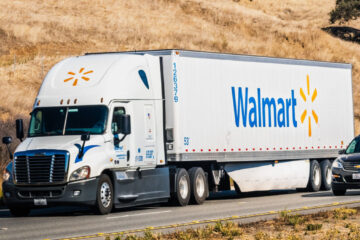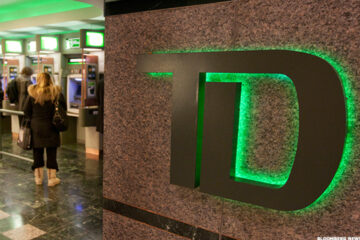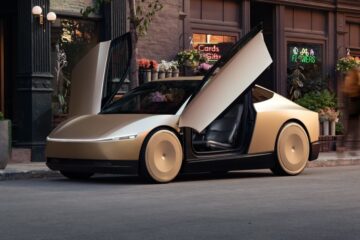Tesla (TSLA) Chief Executive Elon Musk unveiled the company’s first prototype for a robotaxi on Thursday night, Oct. 10.
The presentation wowed the audience attending the unveiling of what Musk called the Cybercab at the Warner Bros. studio in Los Angeles and the millions more who were watching online.
So did the robots who marched through the crowd and showed their dancing talents and ability to pour drinks for those invited to celebrate the unveiling.
🚗 Don’t miss the move: Subscribe to TheStreet’s free daily newsletter 🚗
Investors weren’t so thrilled. Tesla shares slumped nearly 8% to $220 right after Friday’s open and stayed there.
The problem investors see: Tesla’s presentation was long on flash and glitz but lacking detail. And it lacked something they really wanted to see: a moderately priced Tesla.
Related: Dodge, Jeep could see a huge shake-up at the top
Not a huge surprise. Skepticism had surrounded the stock of late.
While the shares had rebounded more than 70% since hitting a 52-week low of $138.80 on April 22, they’d fallen more than 9% in the first eight days of trading in October.
So, the hit to Musk’s net worth? Tesla’s market capitalization has fallen 14.6% to $712.8 billion from $762.8 billion on Sept. 30. The value of Musk’s personal stake fell to $159.5 billion from $187.1 billion.
The “We, Robot” presentation did not start well: It was scheduled to start at 7 p.m. Pacific, 10 p.m. Eastern. But the show was delayed 54 minutes because, the company said, someone in the crowd had passed out and required medical attention.
While waiting, those watching online — and there were millions from all over the world — were treated to a lights-and-electronic music video.
Finally, Musk rolled into the venue in a two-door gold-colored small version of the Cybercab (following up on the Cybertruck name), promising anyone who wanted a ride in one could get one. Tesla had shipped more than 20 versions of the vehicle to the event.
Gull-wing doors, no accelerator or brakes
The doors were gull-wing, meaning they lift up rather than rotate out. One feature: no steering wheel or brakes.
He also had 50 models of autonomous vehicles on hand, built using the Tesla Model Y model to start. And he showed off a larger 20-passenger vehicle called the Robovan. It was also painted gold.
Musk envisions a fully autonomous Cybercab as the vehicle of the future, a nice little lounge to relax or work in while traveling from Point A to Point B.
Accidents wouldn’t happen because the vehicle would know where you’re going, and all the learning from data collected from just about every Tesla in existence would anticipate problems.
The vehicle might be cheaper to operate: 20 cents a mile rather than $1 a mile for a gas-powered vehicle, Musk suggested. And an owner could earn some extra dough by putting the vehicle to work when he’s not using it. In fact, an entrepreneur might buy, say, 20 Robotaxis and “and tend them like a flock,” Musk said.
The price on a Cybercab: under $30,000, with delivery due … Well, let’s let Musk state when manufacturing might begin.
Maybe 2026, he began, then smiled and suggested that might be was a stretch. “I get a little optimistic,” he said. Then, he said, “Before 2027.”
Musk had expected to unveil the Cybercab on Aug. 8 but delayed the presentation to be able to bring enough prototypes.
He has promised fully self-driving cars for years.
The little guy buys the Cybercab
Musk’s vision is that the Cybercab could be owned individually. He never mentioned whether Uber (UBER) , Lyft (LYFT) or other ride-share companies would be buying up the vehicles.
Uber and Lyft shares were up 8% and 9.1% on Friday, in part because analysts see them and related companies as the most realistic buyers.
They would be Full-Self-Driving vehicles. (FSD is Tesla’s most-advanced driver-assistance system.) Autonomy was Musk’s favorite watchword. “With autonomy, you get your life back.”
You get in, tell the vehicle where to go and settle in to check stock prices, social media posts, news or sports. You get out at the destination refreshed.
More Tesla:
Analyst updates Tesla stock price target ahead of key robotaxi eventTesla drops bombshell ahead of anticipated robotaxi eventForget Waymo: Some Uber and Lyft drivers exploit this Tesla tech
He suggested FSD vehicles, built on the Model 3 sedan and Model Y midsize SUV, will start to be available next year in California and Texas. Tesla is now headquartered in Austin. These are expected to be trials, Roth MKM analyst Craig Irwin noted.
But Musk didn’t say whether regulators had weighed in on the idea. It has taken more than a year for those vehicles that have won approvals to get their final OKs.
The entire presentation took about 20 minutes and ended with Musk cheerily telling the crowd on hand, “Let’s party.”
The Tesla Optimus robots were a hit
If there was a star, it was the cadre of Optimus robots, who, Musk said, might be priced at $20,000 and do everything for the owner: doing the grocery shopping, mowing the lawn and the like.
Tesla has been demonstrating the robots’ capabilities for some time. They put in an appearance, for example, at a Shanghai tech conference in September.
Spectators look at Tesla’s Core Technology Optimus humanoid robot at a Shanghai conference in September.
What Tesla analysts thought about Cybercab
What many on Wall Street didn’t get was anything resembling a business plan, including details on regulatory approval, or an idea of what the human-machine Interface would look like. That’s the system that let drivers and passengers interact with the vehicle and its software.
JP Morgan affirmed an underweight rating on the stock and a $130 price target. HSBC maintained its price target at $125.
Related: Toyota chairman has a cruel warning for EV owners
There was one big fan of everything about the Cybercab: Dan Ives of Wedbush Securities, the longtime Tesla bull, who reiterated his outperform rating on the stock and a $300 price target.
Ives called the layout impressive, adding that he thinks the business could generate $10 billion a year in sales.
Related: The 10 best investing books, according to our stock market pros


